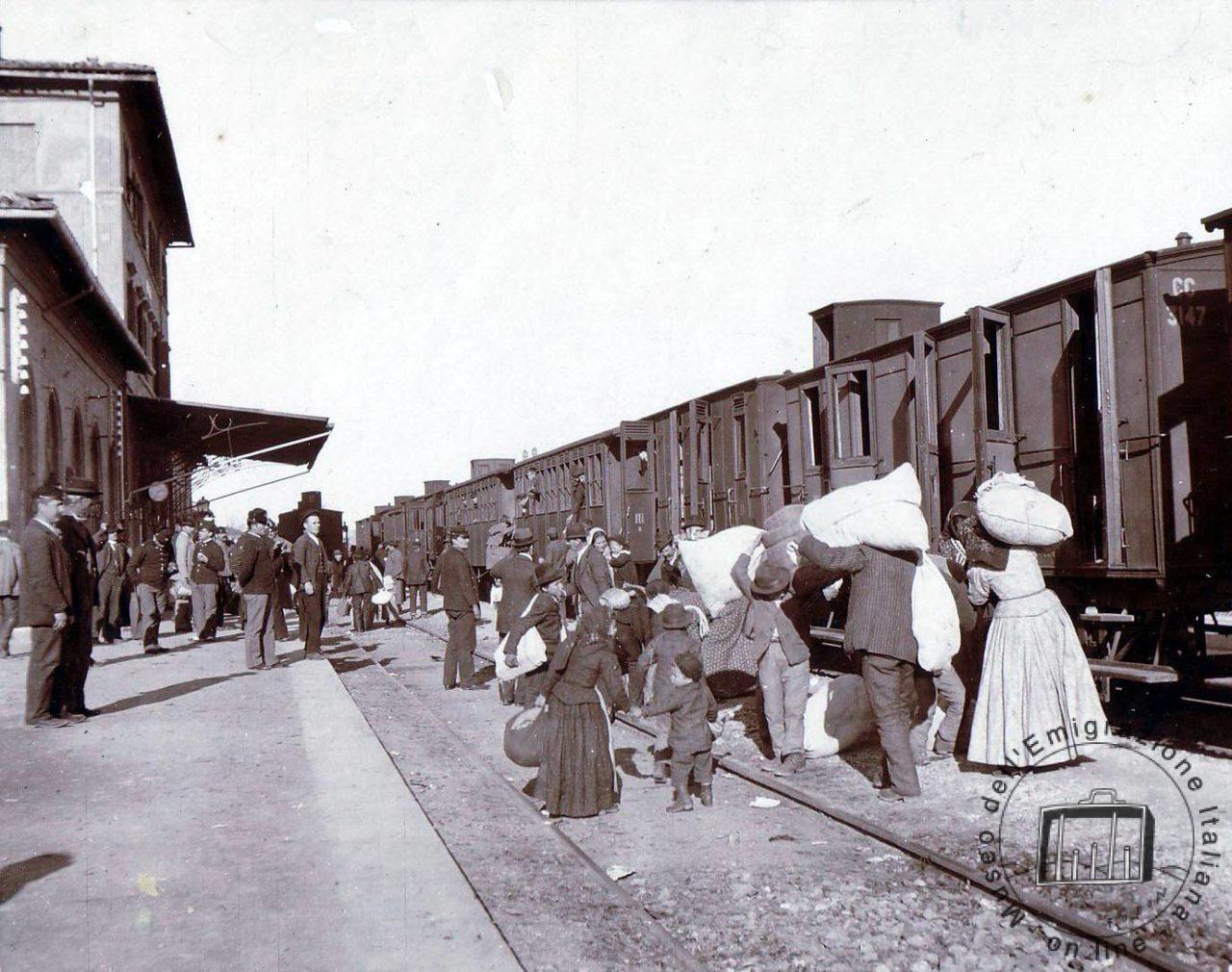Italian emigration lasted from the last decades of the 19th century until the 1970s and was characterized by geographical dispersion throughout the world. What are called "expulsion factors" concerned agriculture, which was threatened by cheap imports of American and other grains, competition from some European countries in the oil and wine trade, and, especially in southern regions, the extension of latifundia and the practice of primitive cultural techniques.
The suitcase has long been the symbol of emigration. Before the suitcase there was the "bundle": a piece of cloth, a shawl at best, in which to wrap things to take with them to the new country. The word infagottare is widely used in a figurative sense: to cover, to clothe, to wrap up a person as best one can with clothes, heavy and abundant cloths so as to make a bundle. In some of the photos published here, one can see women "infagottate," they are themselves bundles in that they are wearing multiple outfits, layered, so as not to leave their possessions, which are poor and therefore precious, unattended in the holds.
And in the bundle, or suitcase, was a whole "world": memories of family long gone, a note for a relative or fellow villager, sometimes a letter of introduction for someone who, it was hoped, could lend a helping hand, food, a musical instrument--a world, indeed.
And also, for the more prescient, a "do-it-yourself" vocabulary. In the Cresci Archives there is a booklet-vocabulary of English, in which one can read such phrases as, "Ianmen, ai nide bai santin ciu it, iu uil scio mi becher sciop Young man, I abbisogno buy some things to eat, you want to show me baker store."


